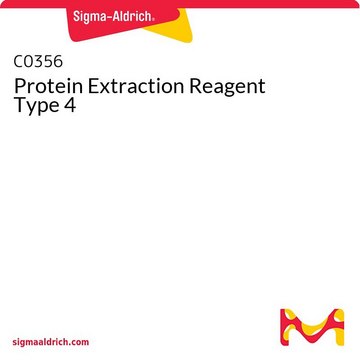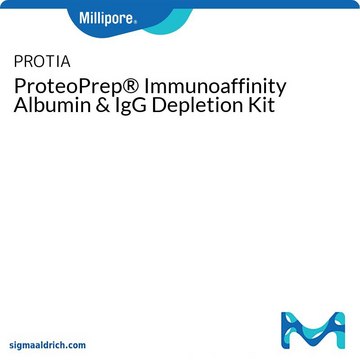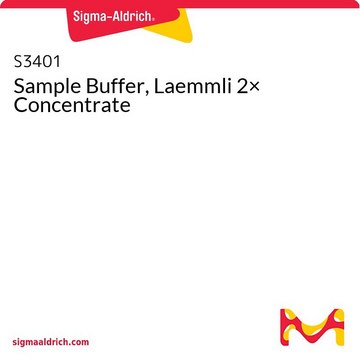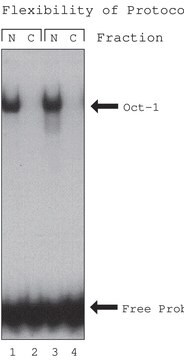PROTTWO
ProteoPrep® Universal Extraction Kit
About This Item
Productos recomendados
Aplicación
- Fraction 1: Soluble/Cytoplasmic Proteins
- Fraction 2: Membrane Proteins
Características y beneficios
- Innovative detergent preparations - Highly improved solubility allows for higher protein loads and greater visibility of low abundance proteins on 2D gels.
- Two pre-mixed solubilizaton solutions - Generates two distinct populations for easy 2D analysis.
- Pre-measured reducing and alkylating reagents - Easy-to-use reagents provide improved IEF resolution.
- Pre-weighed dry blends - Stable and easy to reconstitute
- Conveniently Packaged - No waste. Use only the amount needed.
Información legal
Palabra de señalización
Danger
Frases de peligro
Consejos de prudencia
Clasificaciones de peligro
Acute Tox. 3 Oral - Aquatic Chronic 2 - Carc. 2 - Eye Dam. 1 - Repr. 1B - Resp. Sens. 1 - Skin Corr. 1A - Skin Sens. 1 - STOT SE 3
Órganos de actuación
Respiratory system
Código de clase de almacenamiento
6.1C - Combustible acute toxic Cat.3 / toxic compounds or compounds which causing chronic effects
Punto de inflamabilidad (°F)
Not applicable
Punto de inflamabilidad (°C)
Not applicable
Certificados de análisis (COA)
Busque Certificados de análisis (COA) introduciendo el número de lote del producto. Los números de lote se encuentran en la etiqueta del producto después de las palabras «Lot» o «Batch»
¿Ya tiene este producto?
Encuentre la documentación para los productos que ha comprado recientemente en la Biblioteca de documentos.
Los clientes también vieron
Nuestro equipo de científicos tiene experiencia en todas las áreas de investigación: Ciencias de la vida, Ciencia de los materiales, Síntesis química, Cromatografía, Analítica y muchas otras.
Póngase en contacto con el Servicio técnico













